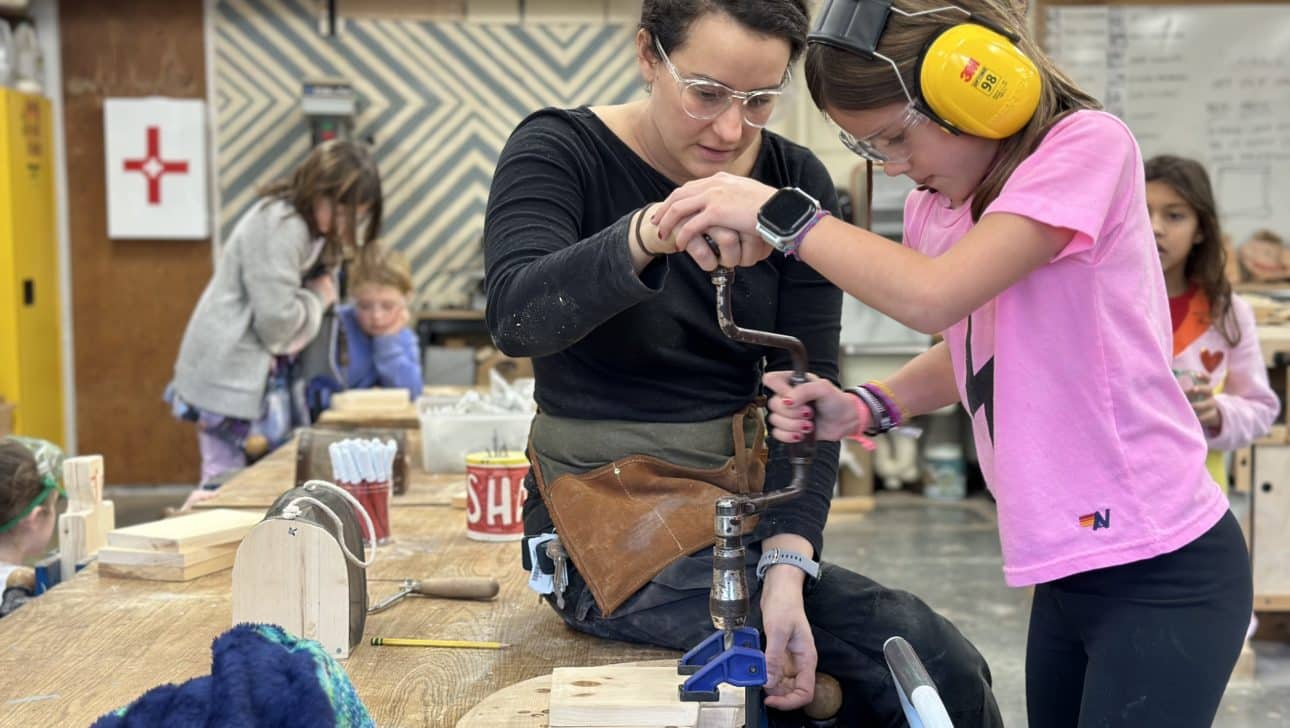Second grade is working to create personalized tool totes in the woodshop. The class began the year by practicing tool use on scraps and making small wooden 3D collages. After reading the book Harvey the Carpenter by Lars Klinting and reviewing all the needed tools and the basic steps, they got to work on the application of all of their practiced skills. Building a tool tote is the perfect project for second graders as it combines the use of an array of tools, from the coping saw to the 4-in-1 file, bit brace (a hand crank drill), sanding blocks, and hammer and nails.
This week, second graders are at the sanding and drilling stage. Ms. Levi uses call and response to get her students’ attention.
She calls out, “Woodworkers!” to which they respond with enthusiasm, “Ms. Levi!”
Before getting started, Ms. Levi reviews shop jobs and offers a drill refresher. She asks the students how to tell if they are drilling in the correct direction. They talk amongst themselves and answer: clockwise, lefty loosey, righty tighty. Those are correct in theory but Ms. Levi pushes the students further to think about cause and effect. What causes the drill to make a hole? To know if the drill is working, it has to be going down into the wood and also making sawdust. There is no harm in going the other direction but it will not create the desired hole.
Ms. Levi reminds students, “If it doesn’t work one way, try another!”
The process of building the tool tote is a layering of using skills students already know, such as reading and a basic understanding of shapes, with new methods of working in a hands-on environment. Students learn to consider the strength, utility and visual appeal of their work. When they learned to cut the ends of their tote, they gained a deeper understanding of symmetry, pattern making, and how to check if two pieces are flush (lined up). DCD woodworkers become astute problem solvers by learning what’s in their tool set and how to apply the correct skill to each moment. These totes and these lessons will hopefully be used by these young woodworkers for years to come– in the woodshop, and beyond!







